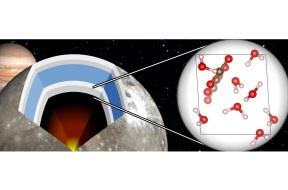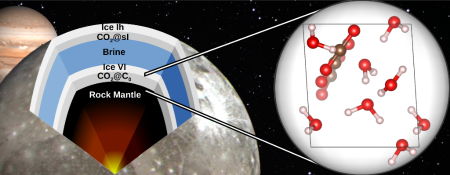The research, undertaken by the University of Oviedo and the CSIC, is based on the fact that a compound that contains water and gas mix to form a different structure
The University of Oviedo and the CSIC have described the properties of a new type of material that can form on Jupiter's icy moons and that contains chemical elements used in life as we know it. It is a gas hydrate (in this case, carbon dioxide); a compound in which water and gas mix to form a different structure. The new structure is considered "packed ice" in which the water forms channels that contain the CO2. The results of the research have been published in the journal "ACS Earth and Space Chemistry".
Fernando Izquierdo, a researcher at the University of Oviedo and lead author of the article, made highly precise quantum-mechanical calculations on CO2 hydrate in order to analyse its behaviour at pressures greater than ten thousand atmospheres at cryogenic temperatures (below -100ºC). The most relevant results include the possibility that carbon dioxide can move freely through the solid structure, which would enable this gas to cross the ice barrier that would form between the rock at the bottom of the lunar ocean and reach the upper layers.
The material discovered could have significant consequences at a geological and astro/biological level, since it would enable a carbon source (CO2) to come into contact with liquid water with dissolved salts at temperatures around 0°C, thus opening the possibilities for life formation in the inner oceans of Jupiter's icy moons.
The work was undertaken by the Theoretical and Computational Chemistry of Materials (QTCMAT) group of the University of Oviedo's Malta Consolider Network, through Fernando Izquierdo and J. Manuel Recio, and by the Madrid INTA-CSIC Astrobiology Centre, with the participation of Olga Prieto-Ballesteros.





